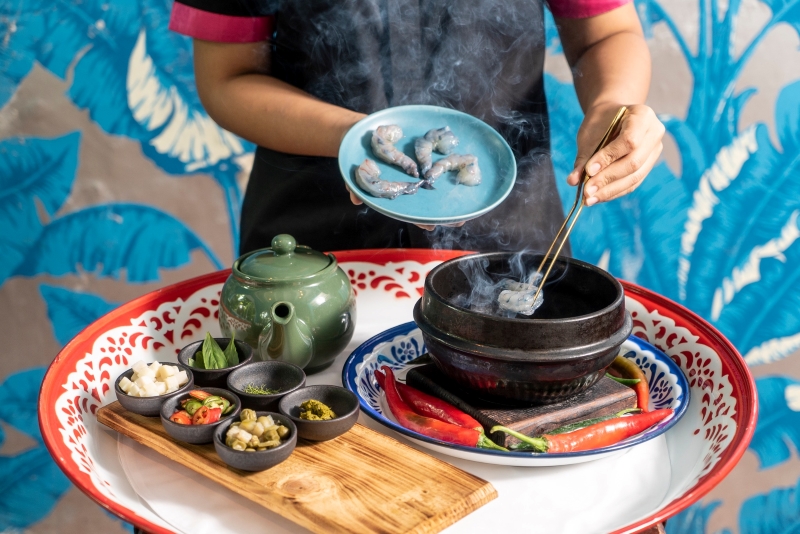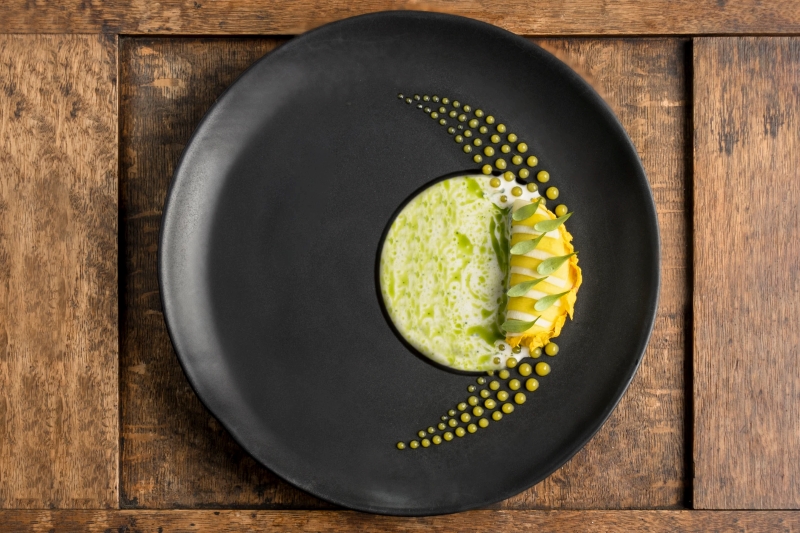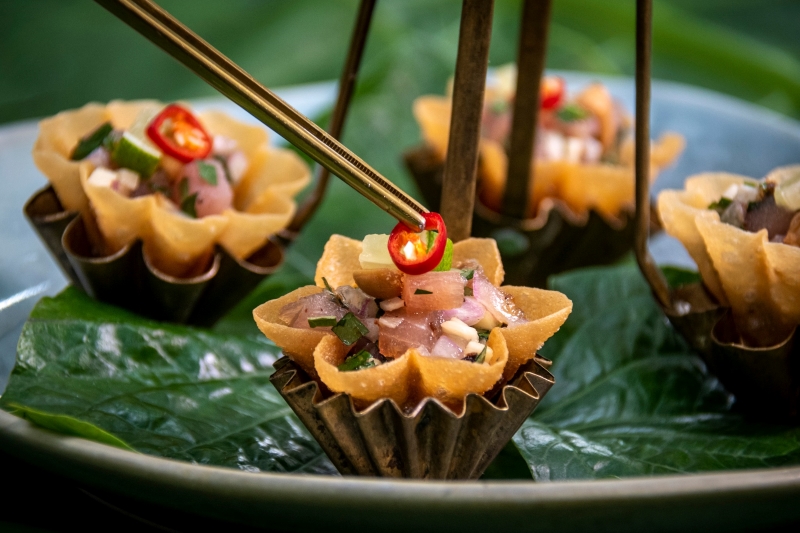
The Yum Sum-O is prepared tableside at Issaya (Photo: Issaya Siamese Club)
Where: Located just off Sathorn Road, a major artery of the city, and sandwiched between the mighty Chao Phraya and sprawling Lumpini Park, this bustling neighbourhood is home to trendy hotels and trendier F&B spots.
What: Saawaan is famed for its seasonal eight-course tasting menu that focuses on representing traditional ingredients or cooking techniques with modernity, innovation and finesse. Its name means “heaven” in Thai and sending you there — from the standpoint of pure gustatory experience, of course — is the raison d’être of its chef de cuisine, Saritwat Wanvichitkun, best known by his nickname Earth.
Why: Just the simple comparison of one Michelin-starred Saawaan’s pricing alone (THB2,790++, or RM358++ — half the price of most of the Klang Valley’s purportedly “fine dining” establishments) makes it worthwhile. The service is flawless (that’s Thailand for you) and the staff will go all out to make you feel like a cherished, valued guest. Can’t eat a particular ingredient? No problem. You won’t have to worry about paying a RM300 surcharge for the basic right of having an option.
193da2_855f39a03fb44458819659affc686f20mv2.jpg

The experience: Divided into Raw, Fermented, Yum (Thai for “mix” and usually denoting salads), Boiled, Steamed and more, the Saawaan experience is akin to a journey across Thailand in one meal. The culinary cognoscenti will also be aware that Fred Meyer, a founding partner, is a hardcore French foodie. So, expect some superlative ingredients sourced from Brittany and Burgundy that star alongside expertly reimagined dishes.
Before the meal proper even begins, a quintet of “surprises” will be served as a paean to the Thai kitchen in five perfectly formed bites. For example, there could be shrimp somtam on a cracker, a sliver of sponge cake (evoking kanom sa lee) with sweet nam pla, or perhaps chilli meringue with marmalade shaped to resemble luk chup, the quintessential Thai marzipan sweet.
Without giving too much away, just expect flavours to be on the robust side. After all, despite chef Earth’s many years of French training, his palate is honed by his Phuket roots and he spent a good part of his childhood studying in Penang. Saawaan just opened a more casual sister outlet in Tokyo’s shiniest new locale, the verdant Azabudai Hills complex. So, if ever you need a hit of heat in between endless bowls of ramen or sushi omakase menus, you now know where to head to.
Where: Dine here even if just to soak up the quirky vibes of Chiang Mai-based Danish designer Hans Bogetoft Christensen’s brightly accented ambience set in a historic Peranakan-Thai villa that dates back more than a century. Regulars know how to come early for pre-dinner drinks to enjoy all the pleasure afforded by a lush tropical oasis set amid central Bangkok’s soaring skyscrapers.
What: Those who love famous names would be well aware that Issaya Siamese Club (it is named after the seasonal monsoon rains, which cause the garden to flourish, as well as the notion of an old-school members-only club) is co-founded by the renowned Ian Kittichai.
miang_tuna_issaya.jpg

Why: Fine without feeling fussy like fine dining sometimes can, there is much to love about Issaya. Being here makes you feel like you were invited to a house party by the rich, cool kids of Bangkok. With colour, chatter, smoke, fire and, in the background, that glorious percussive rattle ’n’ hum that tells you your cocktail is being shaken that very minute — Issaya is as much a vibe as it is a place to enjoy food and a fun night out in one of Asia’s most exciting cities.
The experience: Friendly, filling and flirty, traditional Thai is the order of the day at Issaya but with a worldly, cosmopolitan flourish. The classic starter of Mieng Kam, for example, is rechristened Mieng Tuna and there is no fiddling about with the stuffing of betel leaves. Rather, everything — including the yellowfin tuna — is already neatly chopped and served in a pie tee-esque tartlet.
Kor Moo Yang, or grilled pork shoulder, is finished tableside (memories of nostalgic gueridon service, anyone?) and accompanied by a northern-inspired sticky rice dressing. Even the Yum Sum-O is not your regular pomelo salad. Instead, it features shrimp sautéed à la minute, right before you in a claypot, after which it is tossed with honey pomelo segments, boiled eggs, peanuts and red chilli sauce.
Be sure to extend Issaya’s hearty, nourishing philosophy with an order of Khao Ob Mor Din, a signature offering that Kittichai invented based on memories of his father. A rice dish prepared using Asian multi-grains, mushrooms from Chiang Mai and garlic, it pairs wonderfully with Issaya’s array of curries but is fragrant and tasty enough to enjoy on its own. Finish with a Maekhong Baba, topped with coconut whipped cream, fruit, pandan sauce and spiked with — what else but — Thai rum.
This article first appeared on Aug 5, 2024 in The Edge Malaysia.


